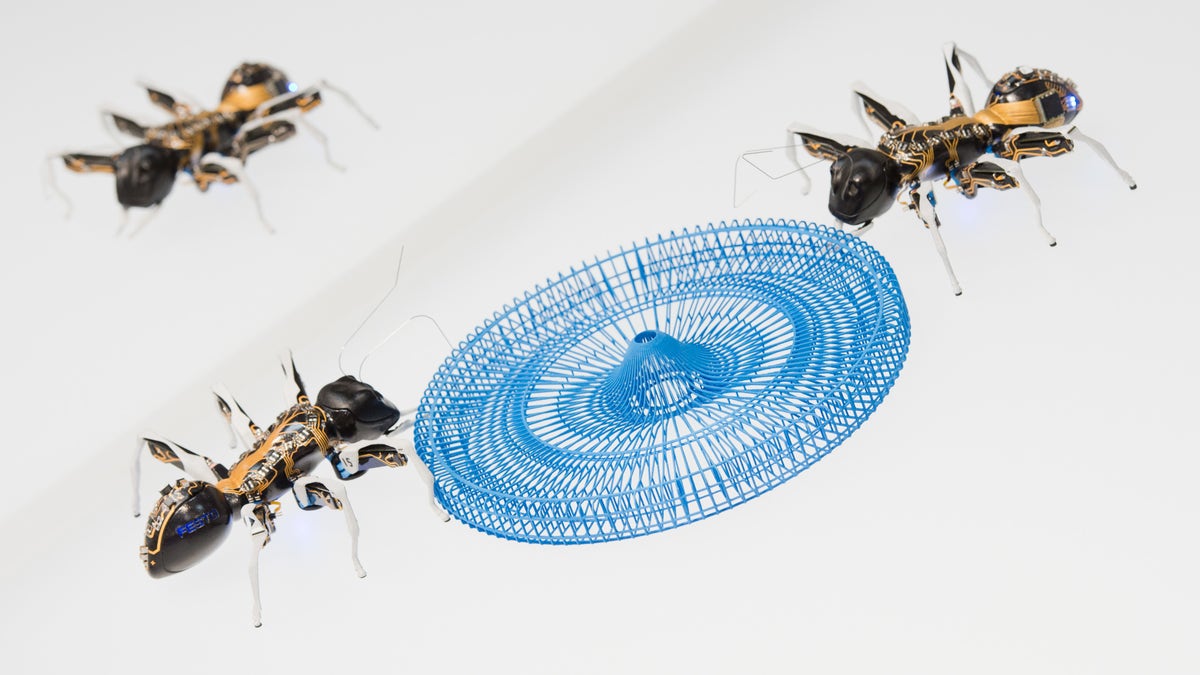Fox News Flash top headlines for June 9
Fox News Flash top headlines are here. Check out what's clicking on Foxnews.com.
Swarms of robotic insects could someday help us explore other planetary realms.
A researcher at California State University, Northridge mechanical engineering professor Nhut Ho, has been awarded a $538,000 grant from the Pentagon to collaborate on the “Human Swarming Teaming Platform for Research in Human Automation Trust and Reliance” project.
“For this particular project, we are exploring how to build a swarm of robots that can be put into different unknown environments and learn to navigate these environments to complete tasks,” Ho said in a statement. “In order to accomplish this, the autonomous robots will be designed to mimic the behavior seen in insects that swarm, such as ants.
TWITTER CRACKS DOWN ON 5G CONSPIRACY THEORIES

Robot ants 'BionicANTs' are seen at the stand of the company Festo at Hannover trade fair in Hannover, Germany. (Getty Images)
The autonomous insect-bots could explore other planets -- perhaps even Mars -- or assist in dangerous search-and-rescue operations on Earth after a natural disaster.
“We were inspired by the behaviors that we see in swarms of ants and bees that self-organize, create clever solutions for different tasks, work in groups of different sizes and have the ability to complete the tasks even when members fail,” Ho explained. “The next thing is figuring out how humans can use the insights gained to design complex robotic systems for really challenging missions.”
'FLYING TAXI' DRONE THAT CAN TRAVEL AT 80 MILES PER HOUR SHOWN OFF IN CHINA
As part of the project, the robots will be used in research projects that NASA's Autonomy Research Center for STEAHM is collaborating on with a team from the Jet Propulsion Laboratory, which won first place in DARPA's subterranean challenge.
“For missions such as exploring the Martian surface and voids, a swarm of simple, small robots can complete complex tasks much more efficiently and effectively than a single large rover,” Ho explained.
“Then, there’s the question of how much can you do with a rover versus if you have a swarm of machines. Imagine how much exploration you can do and how much data you can collect that you wouldn’t otherwise be able to by sending just one single rover up there," he added.





















